Abstract
Mental health professionals in Western countries and the Confederation of Independent States ([CIS], the former Soviet Union) have been examining the social and psychological consequences of the 1986 Chernobyl nuclear accident on the people who lived or are living in the exposed areas. Based on reviews of the literature, papers from international conferences, and communication between researchers in various countries, different perspectives have emerged on classifying distress and disorders and designing treatment programs. The origins of these differences lie in philosophical, historical, and political developments in the West and the CIS. These different approaches often have made it difficult for mental health professionals from the CIS and the West to work together. The goal of this paper is 2-fold: to identify and recognize the main differences in these approaches and to propose specific solutions for bridging the gap. The basic approach of mental health professionals in the CIS is a physiological, nosological one--it focuses on the etiology of the illness. Although their main diagnostic tool is the International Classification of Diseases, 10th Revision, it has undergone adaptations that reflect the Soviet medical and physiological attitude toward psychiatry. These changes have resulted in the abrogation and addition of disorder categories. For example, in the CIS edition of the ICD-9, there is no mention of post traumatic stress disorder as a distinct disorder. In contrast, in the West, the dominant approach is a symptomatic, phenomenologic one. Emphasis is placed on a dynamic understanding of the disorder and treatment is conducted by mental health professional (psychologists, social workers, psychiatrists). This contrasts with the approach used in the CIS, where psychological distress often is somaticized and treatment undertaken by physicians rather than mental health professionals. The authors of this paper call on researchers to come together and work jointly on the recognition and resolution of these differences. Then both groups will be able to offer concrete solutions and build tools that can benefit both sides. It is hoped that these new approaches will receive worldwide recognition and prove useful for other mental health professionals working with persons affected by the accident at Chernobyl.
Full text
PDF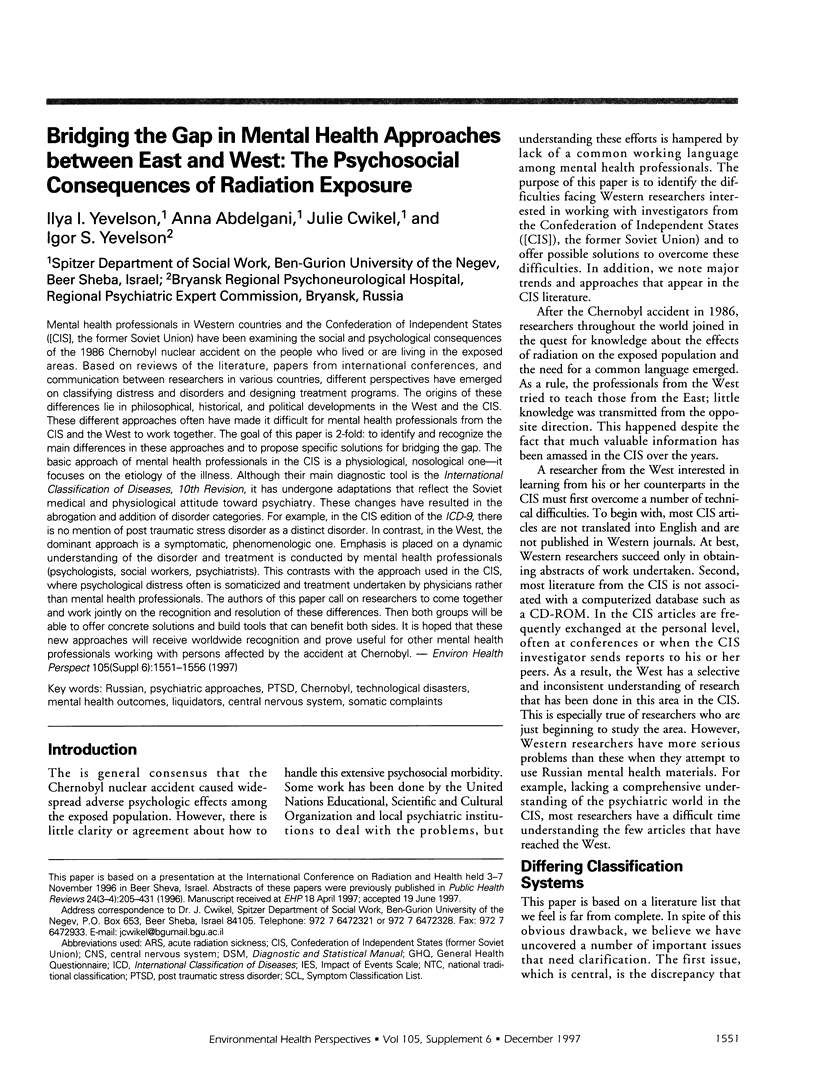
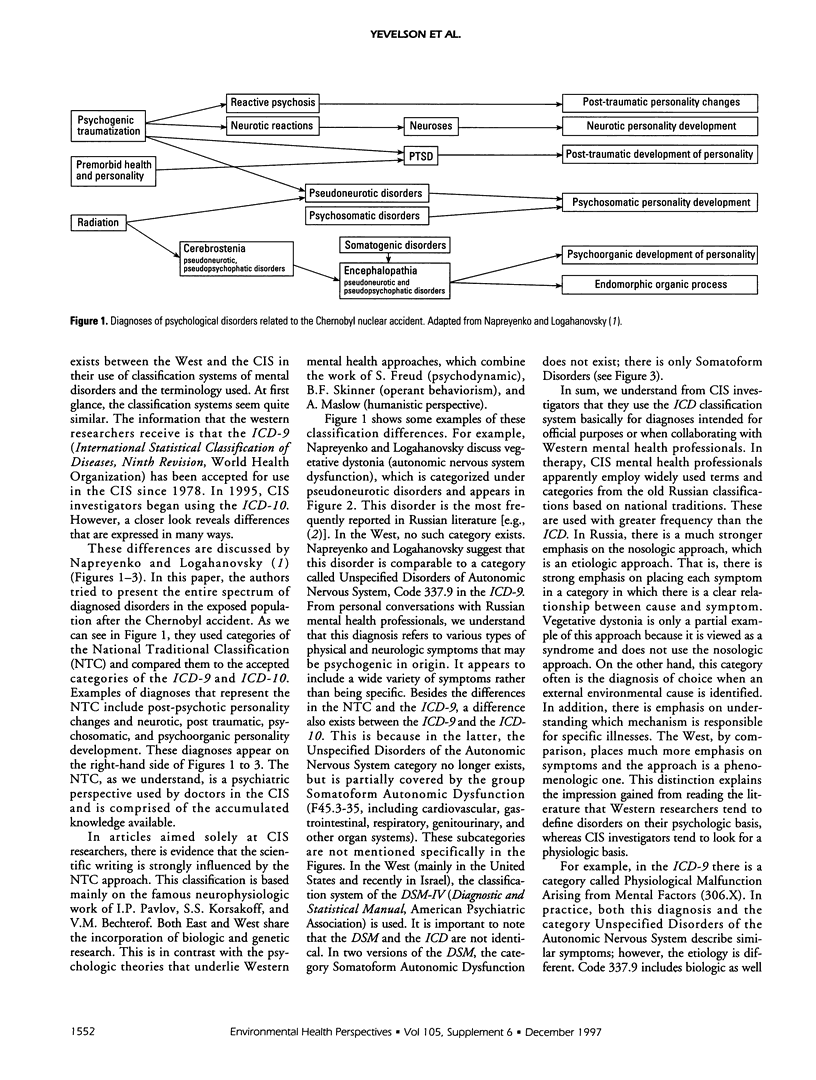
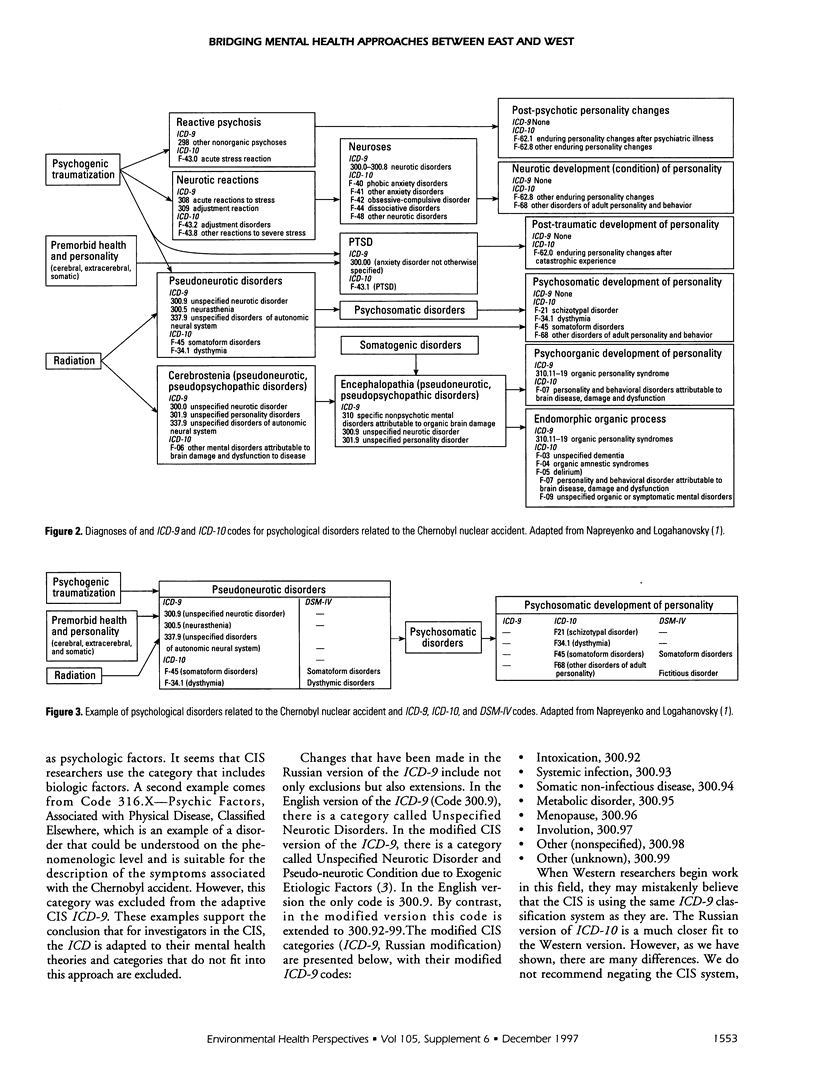
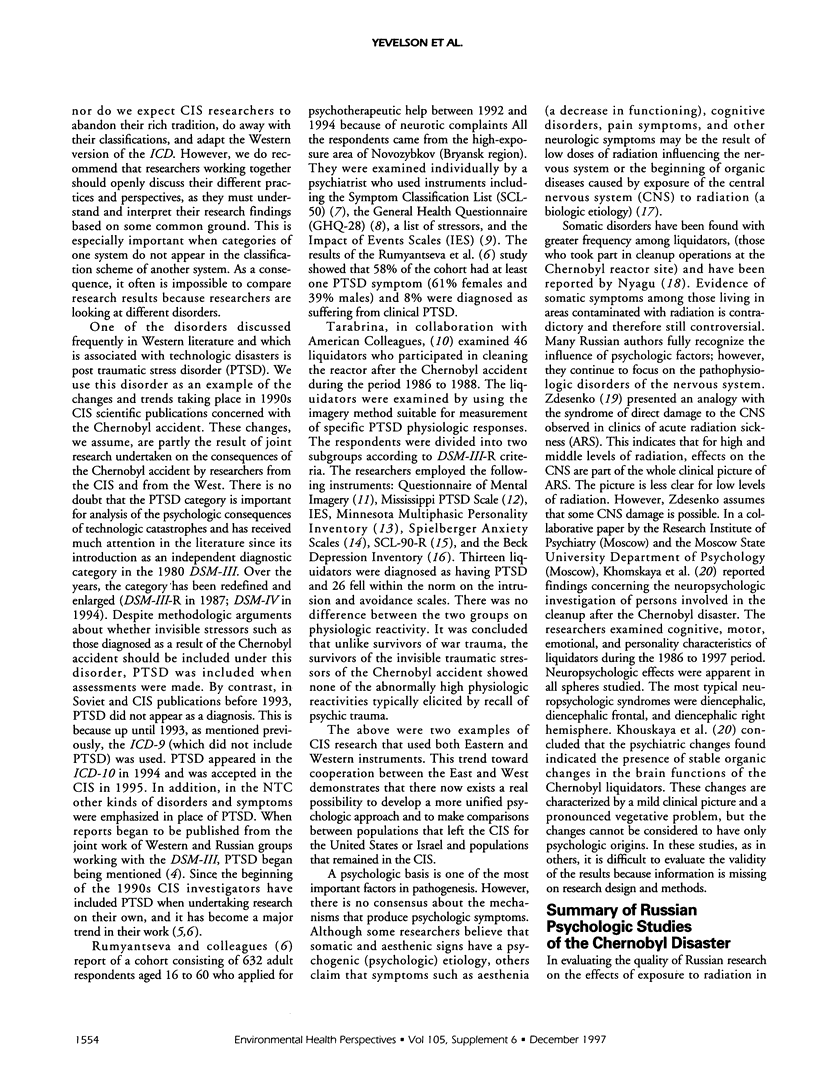

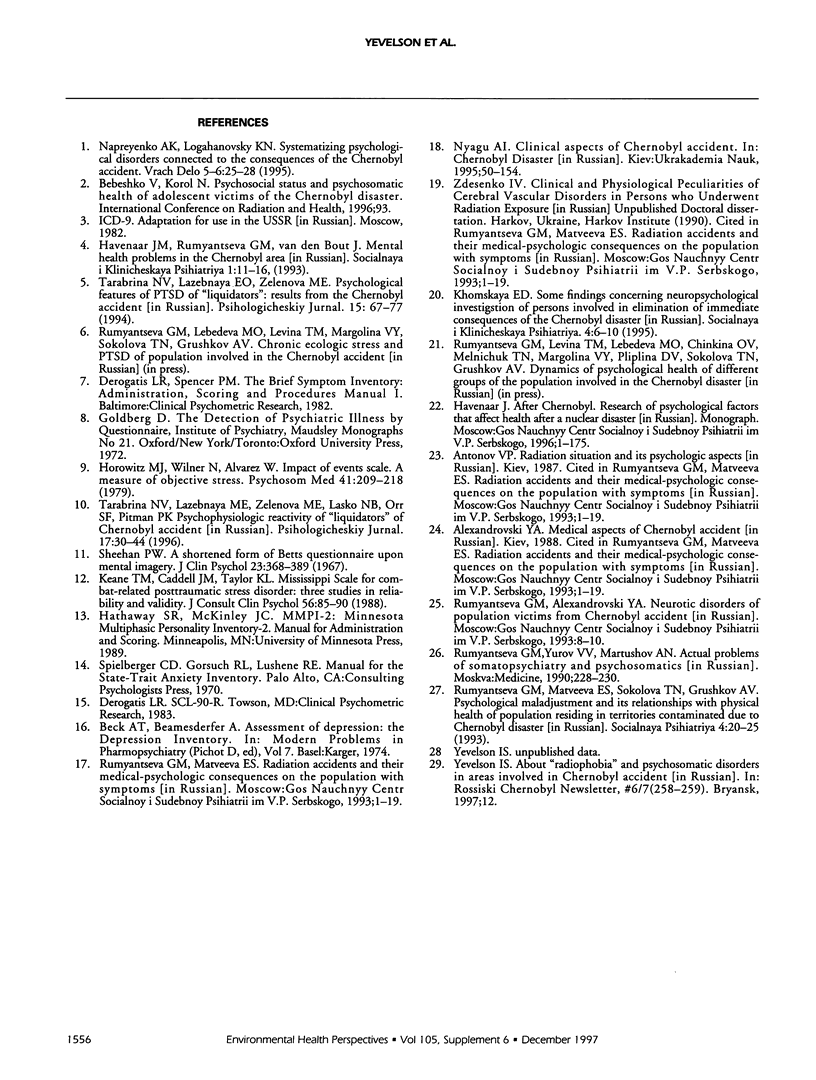
Selected References
These references are in PubMed. This may not be the complete list of references from this article.
- Horowitz M., Wilner N., Alvarez W. Impact of Event Scale: a measure of subjective stress. Psychosom Med. 1979 May;41(3):209–218. doi: 10.1097/00006842-197905000-00004. [DOI] [PubMed] [Google Scholar]
- Keane T. M., Caddell J. M., Taylor K. L. Mississippi Scale for Combat-Related Posttraumatic Stress Disorder: three studies in reliability and validity. J Consult Clin Psychol. 1988 Feb;56(1):85–90. doi: 10.1037//0022-006x.56.1.85. [DOI] [PubMed] [Google Scholar]
- Sheehan P. W. A shortened form of Betts' questionnaire upon mental imagery. J Clin Psychol. 1967 Jul;23(3):386–389. doi: 10.1002/1097-4679(196707)23:3<386::aid-jclp2270230328>3.0.co;2-s. [DOI] [PubMed] [Google Scholar]


